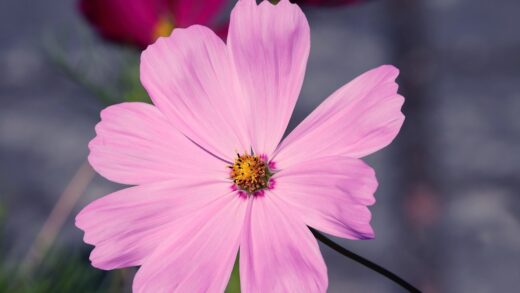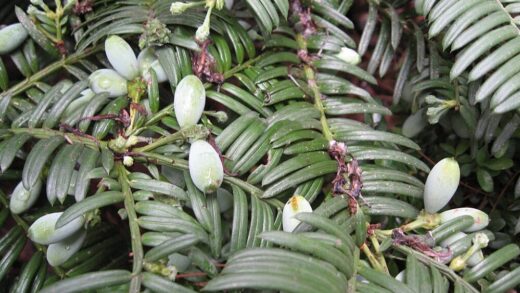Understanding the nuanced water requirements of common mallow is fundamental to cultivating a plant that is not only healthy but also resilient and floriferous. While known for its drought tolerance once established, providing the right amount of water at the right times, especially during its formative stages, is crucial for its overall success. This article delves into the specifics of irrigating common mallow, from the initial needs of a young transplant to the maintenance of a mature specimen through varying seasons. Mastering these irrigation techniques will ensure your mallow develops a deep, robust root system, enabling it to withstand dry spells and produce a spectacular display of flowers year after year. Let us explore the principles of effective moisture management for this classic garden favorite.
The common mallow’s relationship with water is largely defined by its impressive taproot, a key anatomical feature that allows it to access moisture from deep within the soil profile. This is the primary reason for its celebrated drought tolerance in maturity. However, it is a common misconception to think that the plant requires little water from the outset. During its establishment period, the plant is entirely dependent on the moisture available in the upper layers of the soil to develop this crucial root structure. Therefore, your watering practices in the first few months will lay the foundation for its future self-sufficiency.
A successful irrigation strategy is one that mimics the plant’s natural preferences. In its native habitats, the common mallow often experiences periods of consistent moisture followed by drier spells. Replicating this pattern in the garden by watering deeply and then allowing the soil to partially dry out is far more effective than providing constant, shallow watering. This “deep and infrequent” approach encourages the roots to grow downwards in search of moisture, building the resilience the plant is known for, rather than developing a shallow, dependent root system near the surface.
Furthermore, the type of soil in your garden plays a significant role in determining how you should water. A heavy clay soil will retain water for much longer, increasing the risk of waterlogging and requiring less frequent irrigation. Conversely, a light, sandy soil will drain very quickly, meaning you will need to water more often to ensure the plant receives adequate moisture, especially during hot and dry weather. Understanding your soil’s composition is a prerequisite for developing a watering schedule that is truly tailored to your plant’s needs.
Understanding the plant’s natural hydration cycle
To effectively water common mallow, it is beneficial to understand its natural hydration cycle and how it has adapted to survive in various conditions. The plant’s ability to thrive is rooted in its efficiency in both absorbing and conserving water. The deep taproot is its primary tool for survival, acting as a straw that can draw water from subterranean reserves long after the surface soil has dried out. This adaptation means that mature plants have a built-in buffer against short-term droughts, a characteristic that makes them a low-maintenance choice for many gardens.
More articles on this topic
The foliage of the common mallow also plays a part in its water management strategy. The leaves have a slightly hairy texture which can help to trap a thin layer of air close to the leaf surface, reducing the rate of transpiration, which is the process of water vapor being lost from the leaves. While it may not be as visibly adapted as a succulent, these subtle features contribute to its ability to conserve moisture during dry periods. Your irrigation practices should support these natural mechanisms, not work against them.
Observing the plant’s response to different moisture levels is your best guide. A healthy, well-hydrated mallow will have firm, upright leaves and stems. When the plant begins to experience water stress, one of the first signs is a slight wilting or drooping of the leaves during the hottest part of the day. If the leaves recover in the cooler evening, it is a good indication that the soil is starting to dry out and a deep watering is needed. However, if the leaves remain wilted in the morning, the plant is significantly dehydrated and requires immediate irrigation.
The plant’s life cycle also dictates its water needs. During periods of active growth and flowering, which typically occur throughout the summer, its demand for water is at its peak to support the production of new stems, leaves, and blooms. As the season progresses into autumn, the plant’s growth slows down, and its water requirements naturally decrease. Adjusting your watering frequency to match these phases of the plant’s life cycle is essential for maintaining its health and avoiding problems associated with overwatering.
Irrigation during the establishment phase
The establishment phase, which encompasses the first full growing season after planting, is the most critical period for irrigation. During this time, the young common mallow is working hard to develop the extensive root system that will sustain it in the future. Without this foundation, it will never achieve its full potential for resilience and beauty. Your primary goal is to provide consistent and adequate moisture to encourage deep root growth without creating waterlogged conditions that could lead to rot.
More articles on this topic
Immediately after planting a seedling or transplant, give it a thorough and deep watering to settle the soil around the roots and eliminate air pockets. For the next several weeks, you must monitor the soil moisture diligently. A simple yet effective method is to insert your finger into the soil near the base of the plant. If the top 2-3 centimeters of soil feel dry, it is time to water again. This regular checking ensures you are responding to the plant’s actual needs rather than watering on a rigid, predetermined schedule.
When you do water, it is crucial to do so deeply. A light sprinkling that only wets the surface of the soil is detrimental, as it encourages the roots to stay shallow, making the plant more vulnerable to drought. Instead, apply water slowly and gently at the base of the plant, allowing it to soak deep into the soil profile. Using a soaker hose or drip irrigation system is an excellent way to deliver water efficiently to the root zone while keeping the foliage dry, which helps to prevent fungal diseases.
As the season progresses and the plant begins to show signs of new growth and appears more established, you can gradually begin to reduce the frequency of watering. This encourages the roots to start exploring deeper into the soil in search of moisture. The transition should be slow; for instance, you might move from watering every few days to watering once a week, always depending on the weather conditions. This careful weaning process is key to developing a truly drought-tolerant mature plant.
Watering mature and established plants
Once a common mallow plant is fully established, typically after its first full year in the garden, its irrigation needs change dramatically. The deep taproot it has developed makes it remarkably self-sufficient, capable of withstanding normal dry spells without any supplemental watering at all. In many temperate climates, natural rainfall is often enough to keep a mature mallow happy and healthy. The primary role of the gardener shifts from providing consistent moisture to intervening only during prolonged periods of drought.
The key to watering a mature mallow is to err on the side of underwatering rather than overwatering. These plants are far more likely to suffer from problems related to excessive moisture, such as root rot and fungal diseases, than from a temporary lack of water. Before you decide to water, always check the condition of the soil. Even if the surface appears dry, the soil several inches down may still be moist enough for the plant’s roots. Only when the soil is dry to a significant depth should you consider providing supplemental irrigation.
When a prolonged drought does make watering necessary, follow the same principle as for young plants: water deeply and infrequently. A long, slow soak that allows the water to penetrate deep into the soil is far more beneficial than a quick, superficial spray. This replenishes the moisture reserves deep down where the main roots are, reinforcing the plant’s natural survival strategy. After a deep watering, the plant should be fine for at least another week or two, even in hot, dry weather.
Observe the plant’s physical signals as your ultimate guide. A mature mallow will show you when it is truly thirsty. The leaves may appear slightly less turgid or begin to droop during the day. This is a sign to check the soil and provide a deep watering if necessary. Conversely, signs of overwatering, such as yellowing lower leaves or a general lack of vigor, are a clear indication to hold back on irrigation and allow the soil to dry out more thoroughly between waterings.
Seasonal adjustments and environmental factors
Effective irrigation is not a static process; it requires constant adjustment based on the changing seasons and prevailing environmental conditions. The water needs of a common mallow in the peak of a hot, dry summer are vastly different from its needs during a cool, wet spring or as it enters dormancy in the autumn. A skilled gardener must be observant and responsive to these shifts to provide optimal care.
During the spring, as new growth emerges, the plant’s water requirements begin to increase. However, spring weather is often unpredictable, with periods of rain. It is crucial to factor in natural rainfall and avoid overwatering, as the cool, damp conditions can make the plant susceptible to fungal diseases. In the summer, as temperatures rise and rainfall becomes less frequent, the plant’s transpiration rate increases, and it will require more water to support its active growth and flowering, especially during heatwaves.
As summer transitions into autumn, the plant’s growth naturally slows down, and its need for water diminishes. You should significantly reduce the frequency of supplemental watering at this time. Allowing the soil to become drier helps to signal to the plant that it is time to prepare for winter dormancy. Continuing to water heavily in the autumn can promote late, tender growth that is vulnerable to frost damage and can increase the risk of root rot in cold, wet soil.
Beyond the seasons, other environmental factors must be considered. A plant situated in a windy, exposed location will lose moisture more quickly and may require more frequent watering than one in a sheltered spot. Similarly, a mallow planted in a container will have much higher water needs than one planted in the ground, as the limited volume of soil dries out much faster. Always assess the complete picture of the plant’s environment when making decisions about when and how much to water.




















